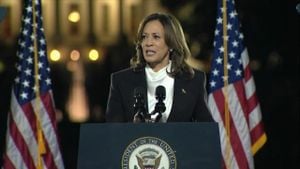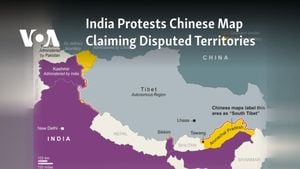With the United States nearing the election of its 47th president, discussions pivot not just on domestic policies but on the larger geopolitical arena and how the outcome might reverberate across the globe, especially in Southeast Asia. On November 5, voters are tasked with choosing between the previous commander-in-chief, Donald Trump, and the incumbent vice president, Kamala Harris. This electoral duel isn't just about the future of America; it holds significant consequences for economies thousands of miles away.
The economic ramifications of this election cannot be overstated. The U.S. has emerged as Southeast Asia's leading trading partner, surpassing China, which has raised eyebrows and left stakeholders on high alert. With as much as 15% of Southeast Asia’s exports directed to American shores, the stakes are high. An uncertain economic climate, exacerbated by volatility, high interest rates, and geopolitical tensions, propels the need for scrutiny on how the election's outcome might shift dynamics.
At the heart of the matter is how Trump, who is known for his unpredictable and often combative trade policies, would approach his potential second term. His first administration was marked by aggressive efforts to dismantle multilateral agreements, leaving many Southeast Asian economies grappling to adapt. If he takes office again, he is expected to intensify his “America First” stance, which could be detrimental to export-driven nations like Vietnam, Thailand, and Malaysia.
According to reports, Trump has already threatened to impose significant tariffs on Chinese goods—up to 60%—as well as introducing 20% tariffs on imports from other countries. This poses risks for Southeast Asian exporters who have relied heavily on the U.S. market. Given the existing trade surpluses these nations enjoy with the U.S., Trump may feel compelled to renegotiate deals, which could lead to decreased access to one of their most lucrative markets.
Harris, on the other hand, brings with her the Biden administration’s policies, which sought to strengthen multilateral engagements and renew alliances. Should she secure the presidency, the approach would likely focus on collaboration and engagement rather than confrontation. This could ease some tensions and provide stability for Southeast Asian traders who are anxious about fluctuated tariffs and trade restrictions.
The duality between these two candidates offers stark contrasts, not only to domestic policies but how foreign nations perceive their futures. Harris's Democratic vision could bolster existing trade agreements and potentially create new ones, which may alleviate fears of decoupling from significant economic relationships. On the latter hand, Trump's focus on bilateral engagements may leave regional economies vulnerable to shifting U.S. priorities.
This electoral showdown will play out against the backdrop of increased scrutiny of companies with substantial ties to China. Many Southeast Asian companies have begun to pivot away from strictly relying on China for manufacturing and exports, and Trump's aggressive dealings could hinder their plans. For nations like Thailand, venturing toward manufacturing electric vehicles with Chinese partnerships, there’s potential for significant fallout if U.S. policies impose restrictions on tech transfers or investments.
Despite the ambiguity of outcomes, it is clear: Southeast Asia's economies stand at a pivotal crossroads. They're not only waiting to see who the next American president will be but also how those choices will shape their growth and stability. With ample uncertainty looming, foreign direct investment, export opportunities, and economic growth will depend heavily on the forthcoming election results.
While both candidates—Trump and Harris—have their respective strategies, Southeast Asian nations will closely monitor their impacts on trade dynamics and regional stability. Should Harris win, expect reinforcement of the alliances forged with them during the previous administration. If Trump returns, prepare for potentially turbulent shifts accompanied by protectionist measures.
Looking beyond the immediate election outcome, Southeast Asia grapples with larger issues, such as infrastructural development and modernization. The region's response to either presidency will, undoubtedly, include cultivation of domestic capabilities capable of sustaining growth irrespective of external economic pressures.
Harris's administration could prioritize greater cooperation through the Indo-Pacific Economic Framework, offering regional economies some relief from worrying tariffs. Conversely, if Trump were to allow tariffs to take precedence, his administration might neglect the bilateral partnerships needed to tackle pressing regional issues—from climate change impacts to technological advancements.
There's also the component of regional security that's worth noting; economic stability and foreign policy intertwine. Would Harris’s policy soft power extend to bolstering regional governments against non-traditional security threats? Conversely, would Trump’s confrontational approach lead to alliances being tested? The future remains unclear as both candidates offer divergent paths.
Simply put, the outcome of this presidential election will resonate throughout Southeast Asia. The stakes are sky-high as these nations assess the gears of trade, economic vitality, and geopolitical relations. Will the U.S. tread the path of cooperation with its neighbors or chart its own course?



